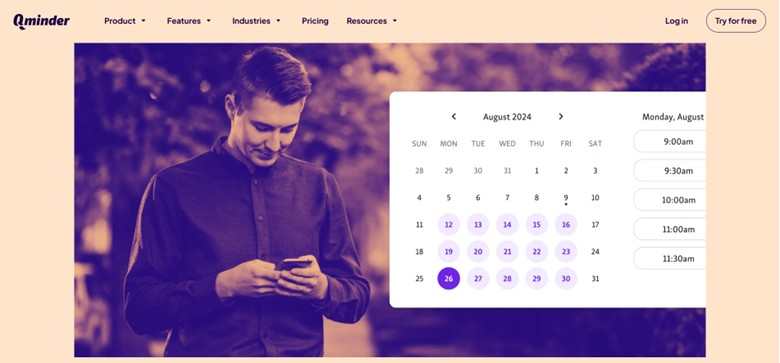Security has become an utmost concern for businesses of any size. Ordinary security systems, like a standard CCTV setup, provide for basic monitoring and nothing more. Real-time intervention and highly advanced capabilities are required in some cases. This brings into the picture the more advanced solution of managed video surveillance and video surveillance as a service.
For an establishment requiring thorough observation and high-level protection that can be scaled, commercial video surveillance services will offer stronger security and take the management burden away from the establishment.

What is Managed Video Surveillance?
A managed video surveillance system is a system that has a third-party monitor, maintenance, and support system. When cameras and systems are installed, instead of leaving the burden on the internal teams, businesses get the system monitored, stored, and maintained by experts. Some highlights:
- 24/7 system uptime and monitoring.
- Instant technical support whenever there is an issue.
- Central storage and quick retrieval of video footage.
- Regular updates ensure compliance with and maintenance of security standards.
This gives companies a chance to give attention to their operations while the professionals ensure that the surveillance systems remain operable.
Understanding Video Surveillance as a Service (VSaaS)
Video surveillance as a service takes the idea of a managed service even further. Instead of heavily investing in infrastructure and hardware, the business goes for the subscription-based option, whereby video feeds are stored in the cloud and managed from there.
Some of the benefits involve:
- First, lower upfront costs since most of the infrastructure is handled by the service provider.
- The scalability of cloud storage can expand when there is a need for more storage for footage.
- Remote access is enabled from any location that has an internet connection, so the shops can monitor security.
- Automatic update for reduced downtime and maintenance.
The model, however, is beneficial mostly to entrepreneurs who crave flexibility and scalability with a fixed monthly amount.
Why Businesses Choose Commercial Video Surveillance Services
Commercial video surveillance services combine the most modern hardware and software with trained professional acumen for a general approach. Any treatment would work for those companies managing various locations, dealing with sensitive assets, or those simultaneously in a high-risk field.
The advantages are:
- Monitoring threats in real time to proactively manage risks.
- Assisting compliance in industries where regulatory oversight is inherent.
- Making workers perform better by giving the surveillance work to professionals.
- Central-level monitoring in many plants.
Thanks to these expert services, companies prevent potential coverage gaps and can use advanced features that I would otherwise find hard to deal with inside.
Key Features of Managed and Cloud-Based Surveillance
When evaluating managed video surveillance or video surveillance as a service, certain features determine overall effectiveness.
- High-Definition Video Quality – Crisp resolution makes it easier to identify individuals, vehicles, or incidents.
- 24/7 Remote Monitoring – Ensures constant oversight without relying solely on on-site personnel.
- AI-Powered Analytics – Detects unusual activities such as loitering, perimeter breaches, or motion during restricted hours.
- Scalable Cloud Storage – Provides flexibility for organizations with growing surveillance needs.
- Mobile Access – Enables real-time monitoring through smartphones, tablets, or remote workstations.
- Data Security and Encryption – Protects sensitive footage from unauthorized access.
- Integration with Access Control Systems – Enhances overall security by linking cameras with door entry systems and alarms.
Comparing Managed Video Surveillance and Traditional Systems
Traditional CCTV systems primarily record footage for review after an incident. While this method is cost-effective initially, it has limitations:
- No real-time intervention.
- Higher risk of missed incidents.
- Internal staff must manage storage and maintenance.
In contrast, managed video surveillance and VSaaS offer:
- Real-time response capabilities.
- Cloud-based access from multiple devices.
- Professional oversight that ensures continuous uptime.
- Lower long-term costs due to reduced maintenance responsibilities.
This difference makes managed solutions a smarter investment for businesses that prioritize proactive security.
Common Applications Across Industries
Commercial video surveillance services are highly versatile and can be adapted to different industries:
- Retail – Monitor theft, customer activity, and employee performance.
- Healthcare – Ensure patient safety and protect sensitive areas like pharmacies or labs.
- Hospitality – Secure guest areas, parking lots, and service entrances.
- Construction Sites – Prevent equipment theft and improve worker safety compliance.
- Corporate Offices – Monitor entrances, restricted areas, and shared spaces.
- Warehousing and Logistics – Oversee inventory, deliveries, and facility access.
By tailoring features to specific needs, surveillance services deliver targeted benefits across various sectors.
Factors to Consider When Choosing a Surveillance Service
Selecting the right provider for managed video surveillance requires evaluating several factors:
- Coverage Needs – Identify critical areas such as entry points, parking zones, storage areas, and employee-only spaces.
- Storage Requirements – Determine how long video footage should be retained to meet compliance or internal policies.
- Integration Options – Choose services that connect seamlessly with existing alarms, access controls, or IoT devices.
- Scalability – Ensure the system can grow with business needs.
- Cost Structure – Compare upfront versus recurring subscription costs to find the most cost-effective option.
- Data Security – Verify encryption, compliance with data protection laws, and secure cloud storage standards.
Benefits of Managed Video Surveillance
Advantages offered by managed video surveillance are beyond just security:
- Lower Operations Burden- Providers manage updating the system, storage, and maintenance.
- Better Response Time- Alerts can be sent to alert personnel who can then immediately react.
- Regulatory Compliance- For some industries, surveillance evidence is necessary for audits and reports.
- Lower Costs than Used On-Site- Some cameras need to cover larger areas without having to increase personnel.
- Centralized View for Multi-Site Operations- A business with multiple locations benefits from a single system.
The Future of Commercial Surveillance
The evolution of commercial video surveillance services continues to move toward smarter, cloud-enabled systems. Upcoming trends include:
- Deepening AI Integration – Predictive analytics that anticipate risk well before an incident occurs.
- IoT Expansion – Linking with smart sensors for heat, humidity, water leakage, and environmental monitoring.
- Hybrid Models – Combining on-premise infrastructure with cloud-based management for maximum flexibility.
- Cybersecurity Enhancements- Enhanced protection to secure the video data against digital threats.
Video surveillance surely is the perfect continuation of business continuity and risk management.
Why Managed Video Surveillance is the Future of Business Security
In modern business, video recording is basic; they want active, dependable, solution-oriented, and scalable ones. Managed surveillance, giving way to video surveillance as a service, brings and combines the capabilities of cloud storage, AI-based detections, and expert supervision to give it an edge over traditional systems.
With commercial video surveillance, organizations must take one step further to ensure public safety; they also contemplate efficiency, operational risks, and future technological developments. Managed and cloud-based video surveillance, then, are must-buy instruments for any business intent on keeping its people, assets, and operations safe.














